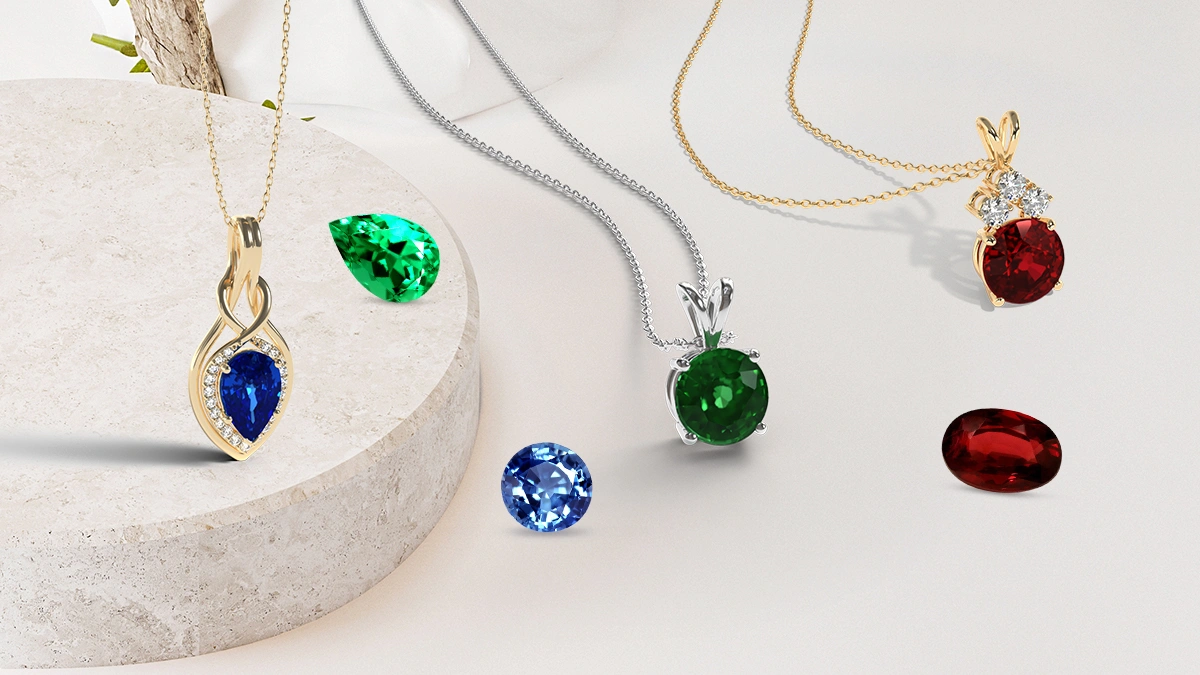Pendants are staple jewelry pieces that are a part of any designer collection worth its name. Although most of us think of pendants as small and rather simple, there are a lot of components that make the pendant structure functional. Here’s a brief guide to know pendants.
Clasp Assembly
Typically placed at the center of the yoke, the clasp assembly is the area of attachment where one end of the strap meets the other. It secures the chain and allows the pendant to hang around one’s neck. The clasp assembly is usually concealed when the pendant is worn as it is placed behind the neck. Lobster clasp and the hook and eye clasp are the two most widely used types of clasps. Fun Fact – There are necklaces without clasp assembly and they are called Lariat necklaces or rope necklaces. Such necklaces are usually quite long, sometimes 34 inches, and can be easily looped around the neck.
Yoke
Sometimes the chain becomes slightly different as it nears the clasp. It may become thicker and extend into large loops in order to accommodate the clasp (depending on its variety). That rear part of the chain is known as yoke. It accommodates the clasp assembly in its entirety. Sometimes the design may be so subtle that the yoke may be difficult to tell apart from the rest of the chain.
Frame
The frame is everything left of the chain after you remove the Yoke and the clasp assembly. It is also the most clearly visible part of the chain. The main pendant dangles off the frame with the use of a bail (explained below).
Chain
The chain comprises everything mentioned so far: the yoke and the clasp assembly and the frame. It is the linear component of any pendant necklace, which is also referred to as the ‘strap’ in the overall structure. While the main body of the pendant (center piece) usually falls at the center of the chain, this isn’t always necessary. Sometimes the frame supports multiple pendants, giving the necklace a fuller look.
Bail
The bail attaches the centerpiece to the chain. Tube bails, clip-on bails, fixed bails, hidden bails and slide bails are some of the varieties. Bails are only used in drop pendants (in other styles the canvas is welded with the chain). Although bails serve an important technical function in a pendant structure, their use often is to enhance the overall aesthetic. Bails may be embellished with smaller gemstones or their metal may be cut and molded into different patterns.
Centerpiece

Also known as the focal point, the centerpiece is the show stopper. It may consist of a single solitaire gemstone or come in a complex design containing multiple gemstones and metals. The centerpiece may be suspended from the chain by use of a bail or the design itself may be welded into the chain. The centerpiece is inarguably the most important component of a pendant/necklace.
Embellishment
Embellishments comprise of all the design components in the pendant. From the center piece to the side stones to little designs on the bails, everything is included in this umbrella term. Embellishments are an important part of any piece of jewelry as they add to the overall aesthetics.
Now that you have gone through this guide to know a pendant necklace and its structure, check out our fresh collection of pre-set pendants at GemsNY. The designs are many and colors are astounding.
Learn More:
Jewelry Gift Ideas For Men In 2025
Understanding Cleavage in Diamonds and Gemstones
Everything You Need to Know About Necklace Chains
Wedding Gifts for the Newlywed Couples
Types of Claws and Prongs




